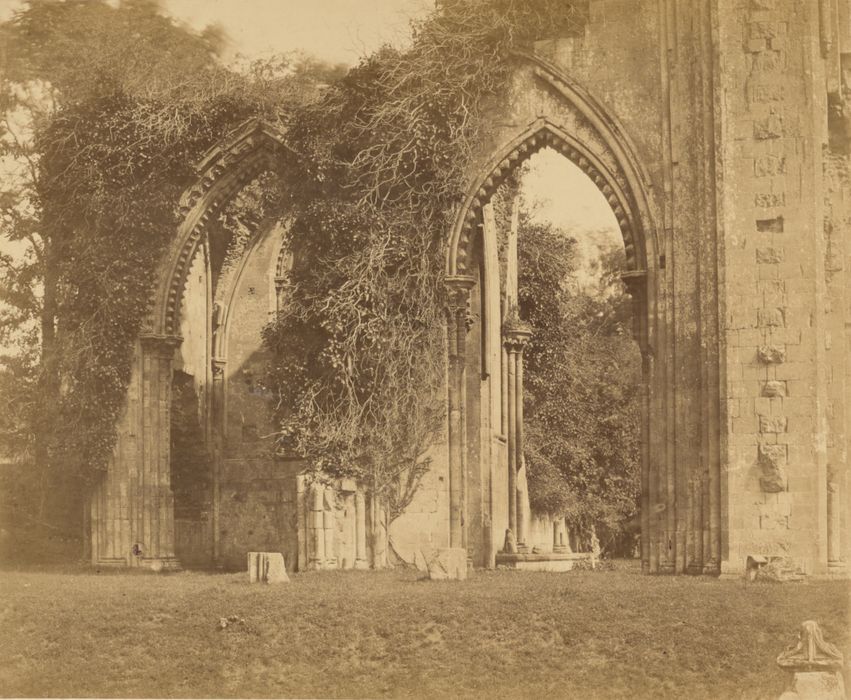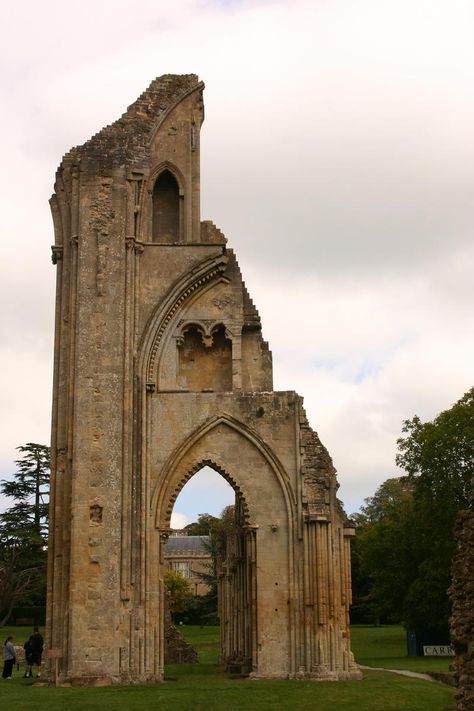
Glastonbury Abbey Main Page
General Info

| City | Glastonbury |
|---|---|
| Country | United Kingdom |
| Place Name | Glastonbury Abbey |
Overview
Overview
Glastonbury Abbey is a historic site steeped in rich English heritage. Located in the town of Glastonbury, Somerset, England, this ancient abbey was a monastery in use from the 7th century until 1539. It is said to be one of the first Christian settlements in England and is shrouded in legend and myth.
Glastonbury Abbey is known as one of the largest religious centers in the UK, combining spiritual sanctity with historical significance. With many legends associated with the site, including King Arthur and the Holy Grail, the abbey is steeped in myth and mystery.
Now in ruins, the abbey offers a snapshot of a bygone world, reflecting the rise and fall of monastic life in England. The ruins of the church, the monastery and important parts of the monks' quarter still remain, surrounded by manicured gardens and orchards in a 36-hectare park.
Today, Glastonbury Abbey continues to welcome visitors from around the world and regularly hosts events and entertainment that bring history to life and tell a moving story of faith, power and tumultuous events.
History
Glastonbury Abbey: For centuries, the heart of spiritualism and myth has been located in the town of Glastonbury, Somerset, England. It was one of the richest and most powerful monasteries in England.
The history of Glastonbury Abbey dates back to the 7th century, when it was an important base for Christian evangelization. According to legend, the original structure was founded by Joseph of Arimathea in the 1st century, although King Anne of Wessex greatly expanded the abbey in the 8th century, turning it into a center of learning and theological power.
In the 10th century, under Dunstan, who later became Archbishop of Canterbury, the abbey became a Benedictine monastery. It was Dunstan who, perhaps more than anyone else, helped create the mystique of Glastonbury. He encouraged the abbey to be associated with the fabled Avalon, the final resting place of King Arthur.
The 12th century was the golden age of the abbey. The magnificent complex, the remains of which we see today, was rebuilt and took shape. Unfortunately, the abbey suffered a series of fires that destroyed much of it, so extensive reconstruction was carried out.
Glastonbury Abbey lost its power during the Reformation. in 1539 it was closed by Henry VIII and the last abbot, Richard Whiting, was executed for resisting the king's actions. Later, the fantastic structures of the abbey fell into disrepair and were neglected and finally fell into disrepair.
The ruins of Glastonbury Abbey are tangible reminders of England's spiritual and mythical past, a symbol of religious power and the enduring appeal of the Arthurian legend. Today it stands as a place of quiet contemplation, mysticism and exquisite beauty; we invite you to explore the fascinating stories of our ancestors. The roots of these stories are buried deep within the surrounding grounds of Glastonbury Abbey, waiting to be discovered by inquisitive minds like yours.
Geography and Natural Features
In the heart of England's Somerset lies the historic Glastonbury Abbey. This holy place is located in an intriguing geographical region that combines a rich human history with diverse natural features.
The Abbey is located in the town of Glastonbury, famous for its eclectic spiritual heritage, vibrant local culture and the famous Glastonbury Festival. The town is part of the Somerset Levels, a coastal plain and moor in central Somerset. This enclosed landscape creates the breathtaking scenery that has become synonymous with Glastonbury.
/
The abbey itself is surrounded by several important geographical and natural features. This includes the famous Glastonbury Tor, a tiered hill overlooking the Abbey and the Somerset Levels. The Tor can be seen for miles and is topped by St. Michael's Tower without a roof is a cultural relic associated with various myths and legends.
Next to the Abbey you will also find the tranquil and mystical Avalon Marshes, home to a variety of wildlife and lush flora all year round. Those on the lookout can spot otters, kingfishers and even the occasional deer. The moors also offer spectacular views of the Abbey and Glastonbury Tor.
Glastonbury Abbey's varied geography, combining plains, moors, hills and archaeological treasures, not only offers visitors sensational views, but also immerses the Abbey in a rich tapestry of human and natural history. This setting helps maintain the sense of magic and mystique that surrounds this legendary site.
Influence and Legacy Features
Glastonbury Abbey: In its day it was one of the richest and most powerful monasteries in England. The historic abbey was founded in the 7th century and expanded in the 10th century. It was destroyed in 1184. a big fire, was later rebuilt and flourished until the dissolution of the monasteries in 1539.
Influence: Glastonbury Abbey has had a great influence on British history. During the Middle Ages, it was at the forefront of religious, cultural and even political changes. Many English kings such as Edmund Ironside are known to have been buried here, indicating its political importance. Surprisingly, it was also a center of learning and famous for its scriptorium.
Be it literature, history, folklore or modern tourism, the influence and legacy of this magnificent abbey runs deep and has served the spiritual and cultural needs of people throughout the ages.
TrendingFan Content
So far, there is no trending fan content for this particular universe. Explore all available content and find something you might like!
